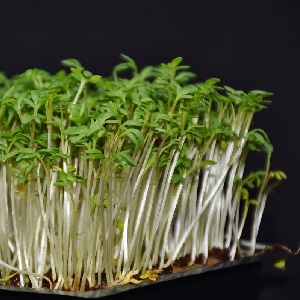Exploring the interplay of phytohormones and polyamines in drought-stressed Cress (Lepidium sativum L.) leaves

Accepted: December 1, 2023
All claims expressed in this article are solely those of the authors and do not necessarily represent those of their affiliated organizations, or those of the publisher, the editors and the reviewers. Any product that may be evaluated in this article or claim that may be made by its manufacturer is not guaranteed or endorsed by the publisher.
Authors
The study investigated prolonged drought stress effects on phytohormone and polyamine levels in cress (Lepidium sativum L.) leaves, elucidating plant responses to harsh environments. Phytohormones, 12-oxophytodienoic acid (OPDA), Jasmonic acid (JA), Jasmonyl-Isoleucine (JA-Ile), Abscisic acid (ABA), and salicylic acid (SA) increased, especially ABA that rose consistently. Indole-3-acetic acid (IAA) responded akin to ABA and SA. Cytokinins such as zeatin (ZT) and isopentenyl adenine (iP) diversified drought tolerance, ZT fell sharply, and iP remained stable. Gibberellic acid (GA3) declined, while brassinolide (BL) surged with prolonged drought. Polyamines reduced, indicating sensitivity to severe drought. Findings uncovered intricate regulatory mechanisms for plant acclimation to water scarcity. Interaction of OPDA, JA, JA-Ile, ABA, SA, IAA, ZT, iP, GA3, BL, and polyamines contributes to drought coping and physiological balance. Insights into cress leaf response and drought tolerance mechanisms contribute significantly to plant drought acclimation understanding.
How to Cite

This work is licensed under a Creative Commons Attribution-NonCommercial 4.0 International License.
PAGEPress has chosen to apply the Creative Commons Attribution NonCommercial 4.0 International License (CC BY-NC 4.0) to all manuscripts to be published.

 https://doi.org/10.4081/jbr.2023.11706
https://doi.org/10.4081/jbr.2023.11706



